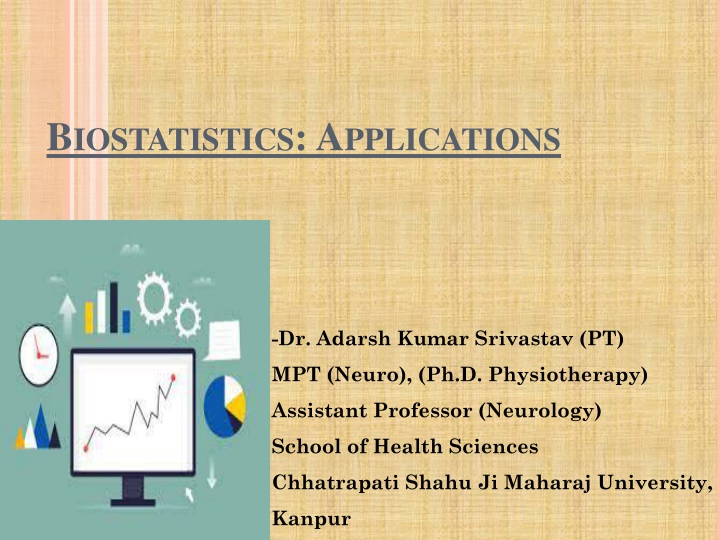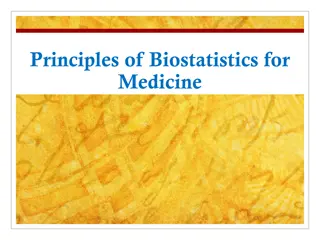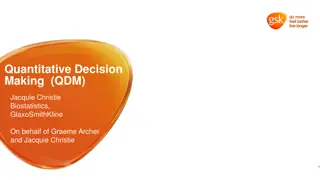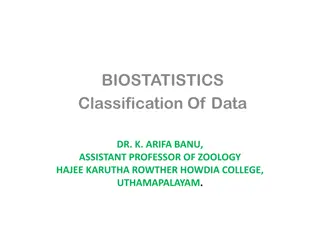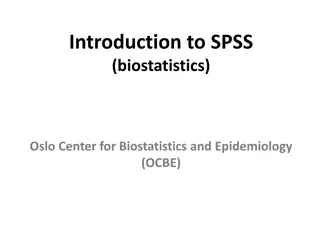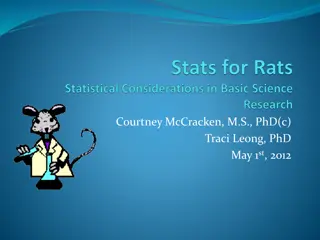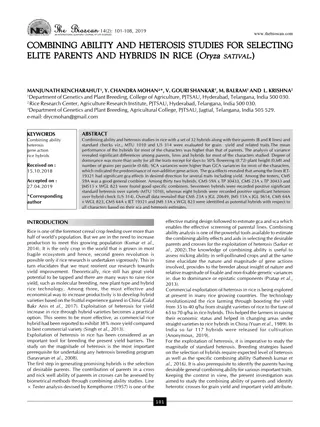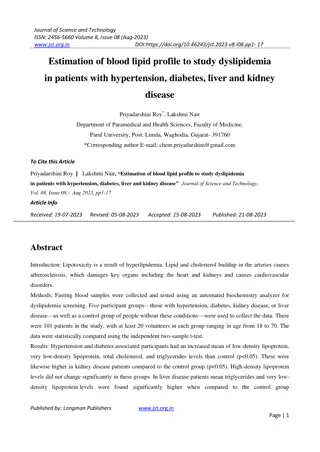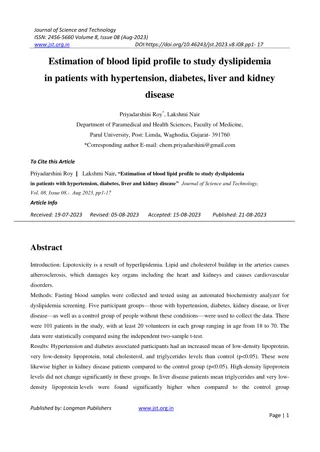Applications of Biostatistics in Health Sciences
This information outlines the diverse applications of biostatistics in various fields such as physiology, anatomy, medicine, and public health. From defining normality in populations to testing the efficacy of treatments and identifying disease patterns, biostatistics plays a crucial role in understanding health trends and evaluating interventions. With a focus on statistical techniques and data analysis, these applications help in making informed decisions for improving healthcare outcomes.
Download Presentation

Please find below an Image/Link to download the presentation.
The content on the website is provided AS IS for your information and personal use only. It may not be sold, licensed, or shared on other websites without obtaining consent from the author.If you encounter any issues during the download, it is possible that the publisher has removed the file from their server.
You are allowed to download the files provided on this website for personal or commercial use, subject to the condition that they are used lawfully. All files are the property of their respective owners.
The content on the website is provided AS IS for your information and personal use only. It may not be sold, licensed, or shared on other websites without obtaining consent from the author.
E N D
Presentation Transcript
BIOSTATISTICS: APPLICATIONS -Dr. Adarsh Kumar Srivastav (PT) MPT (Neuro), (Ph.D. Physiotherapy) Assistant Professor (Neurology) School of Health Sciences Chhatrapati Shahu Ji Maharaj University, Kanpur
APPLICATIONAND USESOF BIOSTATISTICS ASA SCIENCE In physiology and anatomy 1. To define what is normal or healthy in a population and to find limits of normality in variables such as weight and pulse rate the mean pulse rate is 72 per minute but up what limits it may be normal on either side of mean has to be established with certain appropriate techniques. 2. To find the correlation between two variables X and Y such as height and weight whether weight increases or decreases proportionately with height and if so by how much, has to be found.
To find the difference between means and proportions of normal at two places or in different periods. The mean height of boys in Gujarat is less than the mean height in Punjab. Whether this difference is due to chance of a natural variation or because of some other factors such as better nutrition playing a part, has to be decided. 3.
In medicine 1. To compare the efficacy of a particular drug, operation or line of treatment for this, the percentage cured, relieved or died in the experiment and control groups, is compared and difference due to chance or otherwise is found by applying statistical techniques. 2. To find an association between two attributes such as cancer and smoking or filariasis and social class an appropriate test is applied for this purpose.
3. To identify signs and symptoms of a disease or syndrome. Cough in typhoid is found by chance and fever is found in almost every case. The proportional incidence of one symptom or another indicates whether it is a characteristic feature of the disease or not.
In community medicine and public health 1. To test usefulness of sera and vaccines in the field percentage of attacks or deaths among the vaccinated subjects is compared with that among the unvaccinated ones to find whether the difference observed is statistically significant. 2. In epidemiological studies the role of causative factors is statistically tested. Deficiency of iodine as an important cause of goiter in a community is confirmed only after comparing the incidence of goiter cases before and after giving iodized salt.
In Medical Laboratory: Statistics plays a crucial role in many areas of Laboratory Medicine. The knowledge and the correct use of the statistical methods allows us to deal with data variation, to organize and summarize information, to make inference and communicate meaningful experimental results. Moreover, specific statistical methods are frequently applied to routine results and experimental data from validation study designs or verification protocols.
APPLICATIONAND USESOF BIOSTATISTICSAS FIGURES Health and vital statistics are essential tools in demography, public health, community services. medical practice and Recording of vital events in birth and death registers and diseases in hospitals is like book keeping of the community, describing the incidence or prevalence of diseases, defects or deaths in a defined population. Such events properly recorded form the eyes and ears of a public health or medical administrator, otherwise it would be like sailing in a ship without compass.
Thus, biostatistics as a science of figures will tell: a. What are the leading causes of death? b. What are the important causes of sickness? c. Whether a particular disease is rising or falling in severity and prevalence? d. Which age group, sex, social class of people, profession or place is affected the most? e. The levels or standards of health reached. f. Age and sex composition of population in a community. g. Whether a particular population is rising, falling, aging ? h. Which health program should be given priority and what will be the requirements for the same?
COMMON STATISTICAL TERMS 1. Variable: A characteristic that takes on different values in different persons, places or things. A quantity that varies within limits such as height, weight, blood pressure, age, etc. It is denoted as X and notation for orderly series as X1, X2, X3, . Xn. The suffix n is symbol for number in the series. (sigma) stands for summation or results or observation. 2. Constant: Quantities that do not vary such as = 3.1416, e = 2.7183. They do not require statistical study. In biostatistics, mean, standard deviation, standard error, correlation coefficient and proportion of a particular population are considered as constant.
3. Observation: An event and its measurements such as blood pressure (event) and 120 mmHg (measurement). 4. Observational unit: The source that gives observations such as object, person, etc. In medical statistics the term individuals or subjects is used more often. 5. Data: A set of values recorded on one or more observational units. Data are raw materials of statistics.
6. Population: It is an entire group of people or study elements persons, things or measurements for which we have an interest at a particular time. Populations are determined by our sphere of interest. It may be infinite or finite. If a population consists of fixed number of values, it is said to be finite. If population consists of an endless succession of values. The population is an infinite one.
7. Sampling unit: Each member of a population. 8. Sample: It may be defined as a part of a population. It is a group of sampling units that form part of a population, generally selected so as to be representative of the population whose variables are under study. 9. Parameter: It is a summary value or constant of a variable that describes the sample such as its mean, standard deviation, standard error, correlation coefficient, proportion, etc. This value is calculated from the sample and is often applied to population but may or may not be a valid estimate of population.
11. Parametric test: It is one in which population constants as described above are used such as mean, variances, etc. and data tend to follow one assumed or established distribution such as normal, binomial, Poisson, etc. 12. Nonparametric tests: Tests such as 2 test, in which no constant of a population is used. Data do not follow any specific distribution and no assumptions are made in nonparametric tests, e.g. to classify good, better and best you allocate arbitrary numbers or marks to each category.
